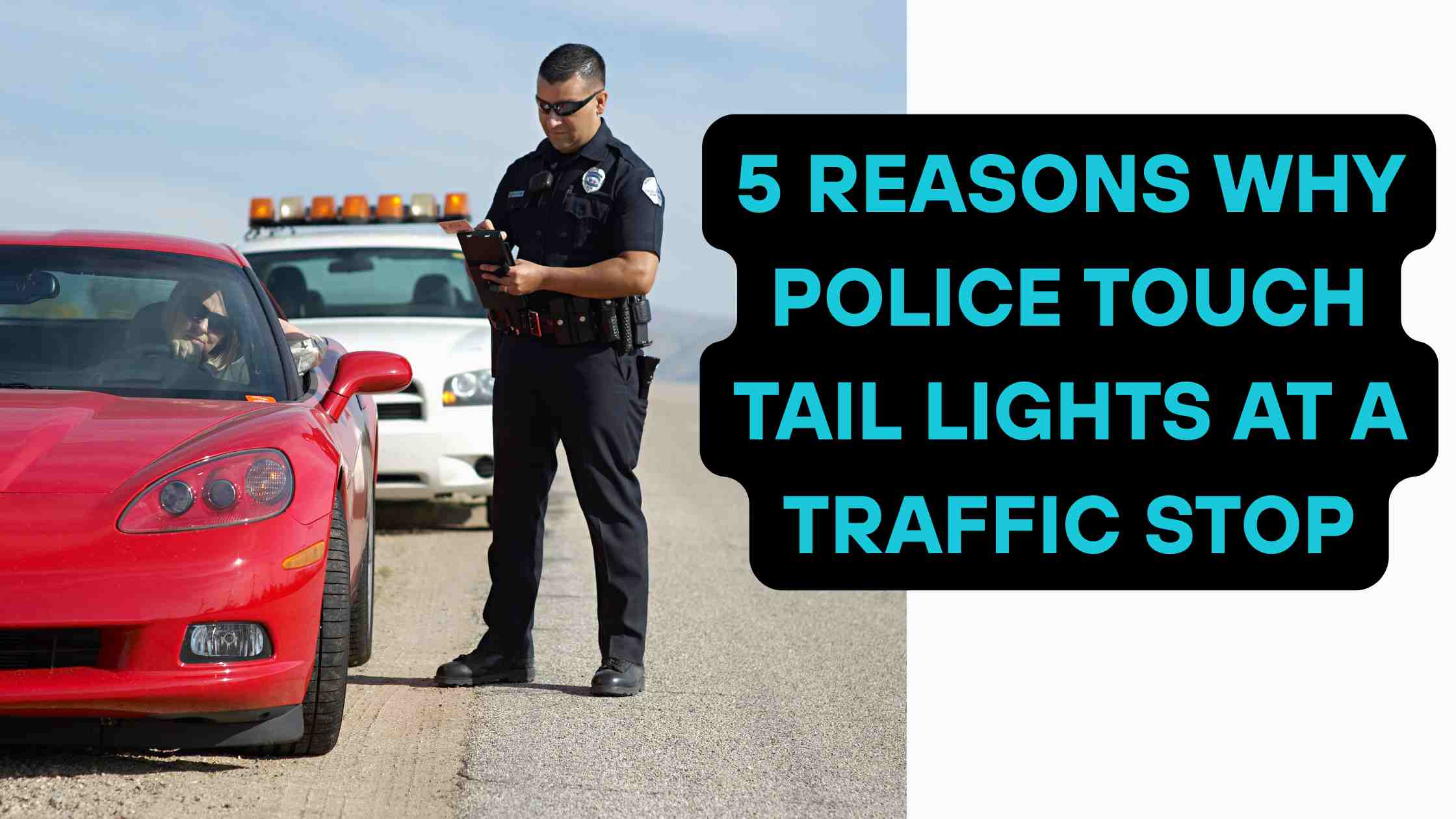
5 Reasons Why Police Touch Tail Lights at a Traffic Stop
You’ve probably seen it happen many times. You’re driving, and all of a sudden, the police pull you over. After asking for your license and registration, the officer walks back to their patrol car—but before they do, they often tap the tail light of your car. It seems like a small gesture, but there’s more to it than you might think.
Read 10 reasons Why should you not let cops touch your tail lights
Have you ever wondered why police touch tail lights at a traffic stop? I know I did when I first started paying attention to this little detail. Turns out, there are several reasons for this seemingly innocent action.
Table of Contents
In this article, I’ll share five reasons why police touch tail lights during a traffic stop. These reasons might just surprise you.
1. It’s a Safety Measure for the Officer
The first and most important reason why police officers touch tail lights is safety.
When the officer approaches a vehicle, they are approaching a potential danger zone. They don’t know who is inside the car or what the situation might be. Touching the tail light helps them stay in contact with the car while maintaining a safe distance.
This simple action lets the officer:
- Keep track of the car’s location in case they need to act quickly
- Ensure that the car stays in place (if the driver attempts to drive away, it’s a clear sign)
- Establish a point of contact if they need to take immediate action
In this way, touching the tail light serves as a subtle safety precaution.
2. It Leaves a Trace of the Officer’s Presence
One reason that I didn’t realize at first was that by touching the tail light, the officer is leaving their fingerprints on the vehicle.
In the unfortunate event that something goes wrong during the stop—whether it’s an altercation or a fleeing suspect—there’s now physical evidence that the officer interacted with the vehicle. This can be crucial in investigations, as the fingerprints on the tail light can be used to confirm the officer’s presence at the scene.
- It’s a reminder of the officer’s interaction with the vehicle
- If the situation escalates or if the driver tries to drive away, this provides evidence of who was there
In essence, touching the tail light is about leaving a trace for accountability.
3. To Signal That They Are in Control of the Situation
When an officer taps the tail light, they are sending a clear message of control. It’s a subtle way of establishing authority during the interaction.
- It shows the driver that the officer is in control and attentive
- The touch serves as a non-verbal communication tool, letting the driver know the officer is observing and aware of everything happening
- It may be a mental reminder to the officer that they are in charge of the situation
This small gesture helps establish the power dynamics in a situation that could quickly escalate if not carefully managed.
4. To Ensure the Vehicle Is Off and Parked
You might think this is a bit obvious, but it’s actually an important reason why officers touch the tail light.
When officers are stopping a vehicle, they want to make sure that the driver has completely stopped and parked the car. By tapping the tail light, they are signaling that they are now approaching the vehicle. This small move can also:
- Confirm that the vehicle isn’t rolling
- Let the officer know that the car has fully stopped
- Help them approach the vehicle with caution
In this way, touching the tail light can serve as a quick check to confirm the car’s status.
5. It’s a Habit of Professionalism
It might sound surprising, but police officers tend to have many habits that develop over time. Touching the tail light has simply become part of the routine for many officers during a stop. This behavior is ingrained in their training, often stemming from standardized police practices.
- It’s part of the protocol many officers follow
- It’s consistent and makes interactions smoother
- It’s another way to show professionalism during the stop
While the reason may not always be as dramatic as others, it still serves a purpose in the officer’s professional routine.
My Thoughts
You want to know why you should not let the cop touch your tail rights? Here are some reasons:
- Potential for misinterpretation of the officer’s intent.
- Risk of contamination of the officer’s fingerprints on your vehicle.
- Violation of personal space and unnecessary physical interaction.
- Increased likelihood of escalation in a tense situation.
- Potential for misuse in court as evidence of contact or interference.
It’s not just a random gesture. It’s a deliberate action meant for safety, communication, accountability, and professionalism. Whether it’s about leaving a trace for future investigations, making sure the car is parked, or signaling control, touching the tail light serves several important functions in a routine traffic stop.
Next time you see an officer tapping your tail light, remember—it’s not just a harmless act. It’s a carefully planned maneuver that plays a crucial role in ensuring a safe and efficient interaction between the officer and the driver.
Cite this article
You can copy and paste your preferred citation format below.
Martin, L. & Arquette, E.. (2025, May 11). 5 Reasons Why Police Touch Tail Lights at a Traffic Stop. Coursepivot.com. https://coursepivot.com/blog/5-reasons-why-police-touch-tail-lights-at-a-traffic-stop/



